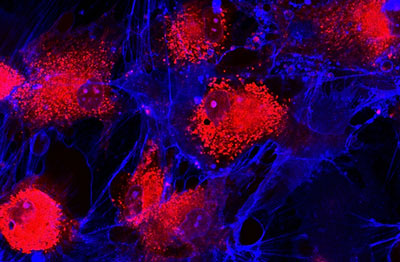Novel treatments emerging for human mitochondrial diseases
Posted: 20 July 2015 |
Using existing drugs to restore basic biological processes in human cells, researchers may have devised effective treatments for mitochondrial diseases…

Using existing drugs, such as lithium, to restore basic biological processes in human cells and animal models, researchers may have broken a long-standing logjam in devising effective treatments for human mitochondrial diseases.
“By adjusting basic biological activities involved in cell death and energy production, we were able to rebalance cells toward more normal functioning. This approach holds great promise for developing effective new treatments for patients with mitochondrial disorders,” said study leader Marni J. Falk, M.D., director and attending physician in the Mitochondrial-Genetic Disease Clinic at The Children’s Hospital of Philadelphia (CHOP).
Resulting from malfunctions in mitochondria, mitochondrial disorders are notoriously complex and variable, with no cures and few effective treatments. Impaired energy flow may affect many systems and organs, including the brain, heart and muscles. On top of causing a dizzying array of primary mitochondrial diseases, abnormal mitochondria are also culprits in a wide range of common conditions, such as type 2 diabetes, Parkinson’s disease, epilepsy, and even human aging.
In the study, Falk’s research team bypassed previous strategies that focused on directly correcting defects that occur within the mitochondria themselves.
“In this study, we investigated the effects of modulating not just signalling molecules, but two of the basic biological processes they regulate: protein translation and autophagy,” said Falk. “Both of these cellular activities are abnormal in mitochondrial disease, and we showed that using drugs that partially inhibit them offer novel treatment strategies.”
Translation is the process in which cells produce proteins specified by the genetic code in DNA and RNA. Autophagy is the mechanism by which cells digest their own components, usually as part of normal maintenance. In mitochondrial diseases, both of these processes run out of control and likely contribute to disease symptoms.
“Dysregulated translation and the increased autophagy that occurs in mitochondrial disease lead to an accumulation of defective or potentially toxic proteins,” said Falk. “The net effect is cell death. When we were able to slow down either or both of these basic processes, we improved mitochondrial disease symptoms in laboratory animals and in human patient cells.”
The findings could open up a new arsenal of therapies for patients with mitochondrial diseases
The research team found significant beneficial results from several existing human drugs. Rapamycin, an antibiotic and immunosuppressant, improved kidney disease in mice with a mitochondrial disorder caused by coenzyme Q deficiency. Probucol (used in the past as a cholesterol-lowering drug) improved lifespan and physiological functioning in mutant worms that had deficiencies in the mitochondrial respiratory chain. Both drugs inhibit signalling molecules that activate protein translation.
The most striking effects came from treating cells with drugs that partially inhibited both translation and autophagy. Lithium chloride, long prescribed for patients with bipolar disorder, and cycloheximide, an antibiotic, dramatically improved viability and cellular respiratory function in diverse human cell models of mitochondrial disease.
Further research should investigate how specific subgroups of patients with mitochondrial disorders could benefit from these and similar drugs. “The current findings,” said Falk, “open a new arsenal of therapies for patients with this challenging set of diseases. We will likely be able to positively intervene to improve patient health in mitochondrial diseases.”
With this knowledge in hand, the Mitochondrial Disease Clinical Center at CHOP is planning early-stage clinical research trials to pharmacologically target the cellular consequences of mitochondrial disease.
The study findings are published in Human Molecular Genetics.
Related conditions
Diabetes, Epilepsy, Heart disease
Related organisations
Children's Hospital of Philadelphia


